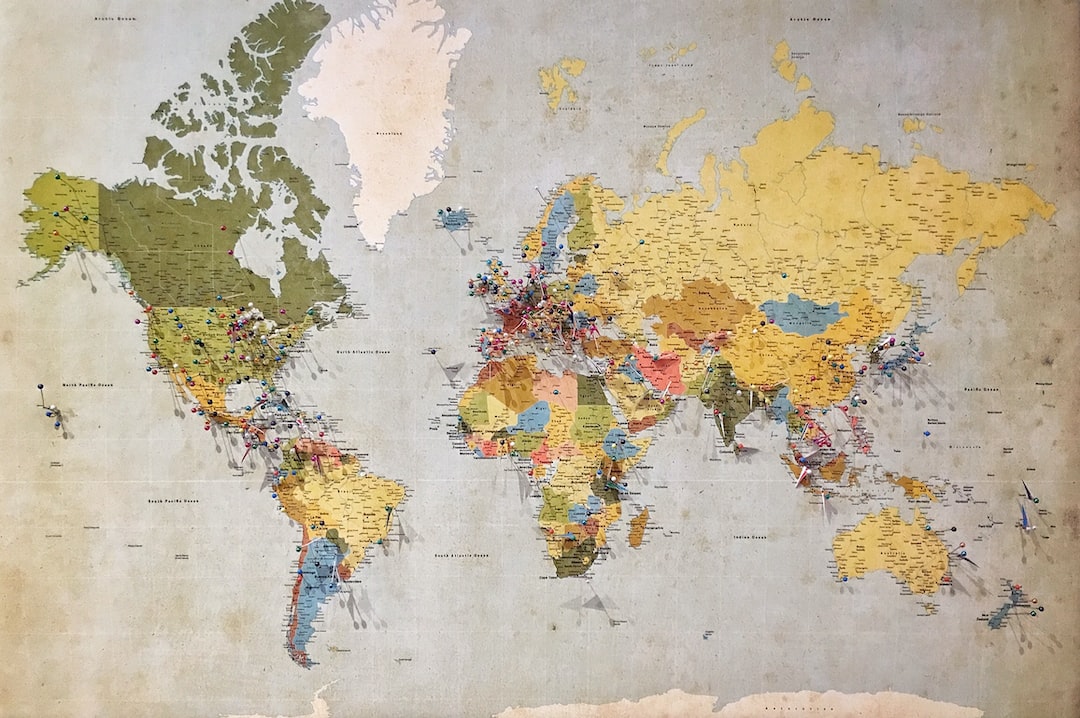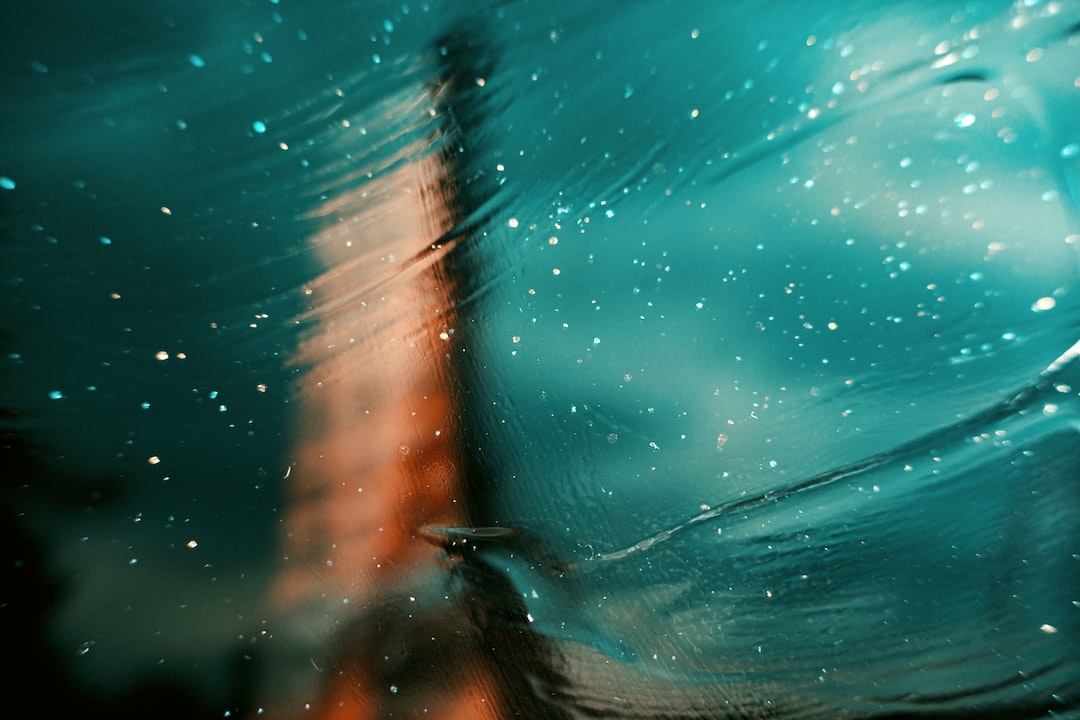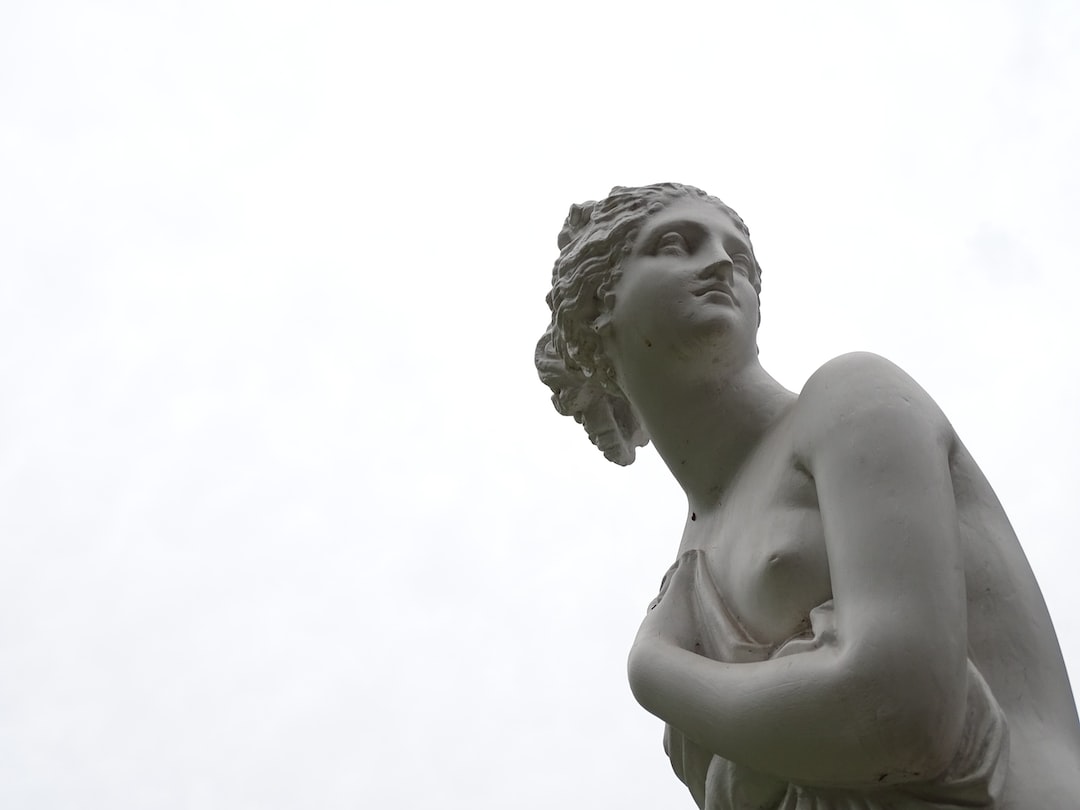Alright fam, buckle up ’cause we’re about to dive into the dope world where art, design, and travel collide. Ever get that rush when you step into a new city and everything around you just screams "vibe"? Well, that’s no accident! It’s all about the art and design that’s been sprinkled everywhere like a heavy-handed barista pouring latte art. This article is gonna break down how creativity shapes every epic trip we take. We’re gonna keep it chill but take a deep dive too, ’cause, let’s be real, we love our insta-pics to have both bokeh and brains. ✈️🎨
Art and Design: The Ultimate Travel Hype-Man
Yo, let’s start with something straight-fire: Art isn’t just canvas and oil paints hanging in museums. Art and design are the soul of any place you travel to. They set the stage, create the mood, and pretty much amp up your whole travel experience from zero to a hundred real quick. Whether it’s street murals that scream #streetcred or architecture that makes your jaw drop, art and design are the unsung heroes of your wanderlust.
The Insta-Worthy Factor
Alright, who doesn’t want that perfect shot for the ‘Gram? Art and design give us those iconic backgrounds. Think about the Eiffel Tower in Paris or the Sagrada Familia in Barcelona. These aren’t just buildings; they’re the stars of our feeds. Beautifully designed spaces make every corner a potential photoshoot location. And let’s be real, we all need that aesthetic boost to transform our feed from meh to major vibes. When cities invest in visually stunning art and design, they’re basically investing in free promo because we’re all snapping and sharing.
Memory Makers
Beyond the ‘Gram though, art and design in a new place create lasting memories. Remember the epic street art you saw in Berlin or the traditional craftsmanship in Kyoto? Those visuals stay with you. They add layers of depth and meaning to your travel experience, making it memorable in a way that a plain, generic location just can’t. Art and design make places stick in your head and in your heart.
Cultural Vibes
Art and design aren’t just about eye candy; they’re like a direct line into the culture and soul of a place. They tell stories about history, traditions, and people in a way that words simply can’t. Take the intricate mosaics in Morocco or the indigenous art in Australia. It’s like getting a mini-history lesson every time you look around. When we travel, we want to feel something real—those cultural vibes make it happen.
The Economics of Aesthetic
Now for a quick sec, let’s get a little nerdy. Did you know art and design are major money-makers for tourism? Yup, cities invest hella cash in museums, galleries, and public art installations. Why? Because they attract tourists like a moth to a flame. Look at Bilbao in Spain. The Guggenheim Museum turned it from a low-key industrial town to a must-see destination. So, when you’re admiring that statue or mural, remember someone’s making bank off your clicks and visits.
It’s All in the Planning
Here’s some tea: exceptional travel experiences often come down to the nitty-gritty details. Urban design and architecture play a crucial role here. Think walkable streets, beautifully designed airports, and even art-infused public transport. All these elements come together to make your trip smoother and more enjoyable. Copenhagen’s bike-friendly paths or Singapore’s Changi Airport are prime examples of how thoughtful design can make travel less of a grind and more of a joyride.
Street Art Scene: The Underdog Hero
Street art is low-key revolutionary. It turns bland city walls into vibrant canvases. From Banksy’s edgy illustrations in Bristol to the colorful murals in Mexico City’s La Roma, street art adds that raw, unfiltered vibe to any location. It’s like seeing the soul of a place laid bare. Street art tours are now legit a thing, showing how much people crave that authentic, street-level vibe. So next time you see a killer mural, know you’re witnessing a slice of the city’s realness.
Iconic Architecture: Building Dreams
Alright, let’s get to the biggies. We’re talking skyscrapers, temples, castles—art that you can walk through. Iconic architecture is what dreams are made of. 🏰 From the pyramids of Egypt to the sleek skyscrapers in Dubai, these structures are more than just buildings. They’re symbols, landmarks, and sometimes, downright legacies.
The Pyramids and Time Travel
Imagine standing in front of the Pyramids of Giza. You’re not just looking at old stones; you’re staring history in the face. These ancient marvels connect us to a world long gone. They make you think about the people who built them, the gods they worshipped, the lives they lived. You get a glimpse into an era that’s otherwise just dusty pages in history books.
Modern Marvels
Then you’ve got modern wonders like the Burj Khalifa. This towering beast isn’t just tall; it’s a statement. It tells you that Dubai isn’t here to play. Modern architectural masterpieces like this are tech-forward but also super creative, blending the best of both worlds. They signal innovation, ambition, and a forward-looking mindset.
The Heritage Factor
On the flip side, places like the Taj Mahal and Machu Picchu are steeped in heritage. Visiting these sites is like stepping back in time. Built with an insane level of craftsmanship, they’re tangible pieces of our shared human legacy. It’s like, imagine the skills it took to carve out the intricate details of the Taj Mahal! Witnessing such heritage sites in person is nothing short of mind-blowing.
Museums and Galleries: The OGs
Art museums and galleries are like the OGs of art tourism. They’ve been doing it before it was cool. Whether it’s the Louvre in Paris or the MET in New York, these places house everything from classical masterpieces to banging contemporary works. They are the sanctuaries for art lovers and history buffs alike. But even if you’re not an artsy type, every gallery visit feels like an adventure.
Immersive Experiences
A lot of museums now offer more than just paintings on a wall. With interactive exhibits and virtual reality, they’re leveling up our experience. Imagine stepping into Van Gogh’s "Starry Night" via a VR headset. It’s next-level stuff. Tokyo’s TeamLab Borderless is a must-see; it’s like stepping into a digital wonderland where art flows freely and immerses you completely. This ain’t your granny’s museum tour.
Pop Culture Influence
Let’s not forget how pop culture makes these art hubs even cooler. Whether it’s art exhibitions featuring iconic anime in Japan or Banksy-themed experiences in London, pop culture infuses museums with a fresh, relevant vibe. This cross-pollination attracts younger crowds, keeping the art scene buzzing.
Festivals: Vibe City Central 🌆
From Burning Man in the Nevada desert to La Tomatina in Spain, art and design play pivotal roles in making these gatherings unforgettable. They elevate the very essence of the festival experience.
Burning Man: The Epitome of Art Installation Festivals
Now, no discussion about art festivals is complete without mentioning Burning Man. This epic fest is more than just a party in the desert. It’s a spectacle of art installations, mind-bending structures, and just pure creativity. Imagine monumental sculptures blazing at night, or entire themed camps dressed up in outrageous designs. It’s like a fever dream of art and enjoyment merging into one huge vibe.
Carnaval in Rio: Explosive Colors and Design
Then there’s the Rio Carnival, which is literally the definition of ‘extra’. It’s not just about the samba beats and dancing; it’s also about the insanely detailed costumes, floats, and parades. The amount of craftsmanship and artistry that goes into every feather, every sequin, is awe-inspiring. People spend months prepping for this one week of explosive color and infectious energy.
La Tomatina: Messy but Masterful
Let’s throw in something unconventional here too: La Tomatina. This tomato-throwing festival may seem hella chaotic and messy, but there’s a weird kind of art in that too. The way the entire town becomes a squishy, fun battle zone is oddly beautiful in its own right. It’s a temporary art piece, a living canvas of red splatters and pure joy.
Art Basel: Grown-Up Wonderland
Alright, if you’re into the more polished side of things, Art Basel in Switzerland is where it’s at. This festival turns the city into a giant, high-end art gallery. You get to see works from the world’s top contemporary artists, making it an eye-popping experience. It’s like stepping into an alternate universe where aesthetic is everything.
Sustainable Design: Saving the Planet One Destination at a Time 🌍
Here’s a real mood: sustainable design. We’re all about saving the planet, and it turns out, art and design are major players in eco-friendly travel and tourism. Sustainable architecture and eco-artistic practices are taking over, making our favorite travel spots greener.
Green Buildings and Eco-Resorts
Think green rooftops, solar panels, and buildings made out of recycled materials. Places like Bali’s eco-resorts show that sustainable design can still be hella luxurious. These environmentally-conscious designs are changing the game by minimizing carbon footprints while upping the travel experience.
Artistic Initiatives for Sustainability
Art also steps in to promote sustainability through various initiatives. Murals and sculptures made from recycled materials spread powerful messages about conservation and environmentalism. You see a massive whale sculpture made entirely of plastic waste, and suddenly, the problem of ocean pollution hits closer to home. Art can be a massive wake-up call.
Local Artisans and Souvenirs: Keeping It Real
When traveling, supporting local artisans is not just a way to snag unique keepsakes; it’s a way to encourage and sustain local economies. Handcrafted goods have stories woven into them—stories of heritage, tradition, and the hands that made them.
Craftsmanship with a Conscience
Imagine picking up a hand-painted ceramic vase from Italy or a traditional woven blanket from Peru. These items aren’t just souvenirs; they’re pieces of art. By purchasing these, you’re supporting local craftsmen and helping keep their traditions alive. Plus, you get to own a one-of-a-kind piece of the place you visited.
Artistic Accommodations: Living the Dream
Hotels and hostels have started to catch the drift, too. Some places have seriously stepped up their game, offering artist-designed rooms and spaces that make staying there an experience in itself.
Boutique Hotels: Unique Stays
Imagine crashing at a hotel where every room is designed by a different artist. From the funky vibes of the 21c Museum Hotels to Japan’s Book and Bed hostel, sometimes your sleeping arrangements are a masterpiece in their own right. Staying in these places gives your trip an extra dash of flair.
Interactive Experiences: Get in the Game 🎮
More and more destinations are offering interactive art and design experiences that let you be more than an observer.
Hands-On Workshops
Participating in local art and design workshops is a lit way to connect deeply with the destination. Whether it’s pottery classes in Greece or batik painting in Indonesia, these workshops are not just educational; they’re immersive experiences that let you take a piece of the culture home with you.
Augmented Reality Tours
Some places are using augmented reality (AR) to elevate the tourist experience. Imagine using an AR app to see how historical landmarks looked in ancient times, or to find hidden street art gems in real-time. It’s tech meeting creativity, making your trip a whole lot cooler and informative at the same time.
Treasure Hunts and Escape Rooms
Interactive art isn’t just about staring at stuff—it’s also about getting in the mix. Cities are hosting art-themed treasure hunts and escape rooms that use local landmarks as backdrops. These activities are a fun way to explore while feeling like you’re in some next-level adventure movie.
Tech and Travel: The Digital Frontier
Let’s talk tech for a sec. The rise of digital art and virtual experiences are next-gen ways to experience destinations.
Virtual Tours
With the whole virtual tour trend, you can now explore museums, galleries, and even entire cities from the comfort of your home. These aren’t just lazy options but legit previews that might just fuel your desire to see the real thing. It’s travel-planning 2.0, fam.
Digital Art Installations
Places like Tokyo’s Digital Art Museum are blending tech and art into something bewildering. Entire rooms transform with projections, light, and sound, creating an experience that’s almost otherworldly. This is the next wave of art-meets-travel moments and it’s lit.
The Art of Dining
Food and art—it’s a pairing made in sensory heaven. Art and design in restaurants and cafes can turn a simple meal into an Instagrammable event.
Artistic Ambiance
From the color scheme to the layout, every detail is fine-tuned to create a vibe. Restaurants use design to elevate their ambiance, turning a simple meal into a full-blown experience. Whether it’s the sleek minimalism of Scandinavian spots or the quirky decor of retro diners, the design makes a massive impact.
Culinary Presentation: Edible Art
Chefs themselves are modern-day artists, turning plates into canvases. The presentation can be as enjoyable as the taste. From molecular gastronomy to beautifully crafted sushi, dining out can be like walking through an art gallery—you experience it with multiple senses.
Traditions and Festivals: Rooted in Art
Globally, traditional festivals rooted in art and design offer a peek into local customs and culture.
Diwali and Holi in India
These festivals are literal explosions of color and lights. Diwali, with its intricate Rangoli designs and sparkling diyas, is like seeing a city decked out in fairy lights. Holi, on the other hand, is pure chaos of color. These festivals provide experiences that photos can’t quite capture, making you feel genuinely alive and part of something enormous.
Day of the Dead in Mexico
This traditional Mexican festival isn’t just about mourning; it’s an explosion of creative expression. The altars, the costumes, the face-painting—all of it is deeply artistic and rich in symbolism. It’s a beautiful blend of solemnity and celebration, steeped in artistic tradition.
Venice Biennale: A Global Art Showcase
Now, onto something that underlines the international flavor of art: the Venice Biennale. Artists from around the globe converge here, bringing a buffet of installations, sculptures, and performances that are both cutting-edge and thought-provoking. It’s like the art world’s version of the Olympics, and being there feels like you’ve just peeked into the future.
Summary
From ancient landmarks to modern digital art museums, art and design deeply influence travel and tourism. They’re not just pretty add-ons but essential elements that shape our experiences, memories, and perceptions. Exploring the vast world of art and design in travel offers more insight, excitement, and connection—turning each trip into an expressive journey. If you get to appreciate the intricate interplay between culture, creativity, and tourism, you’re not only a traveler but a part-time art connoisseur too.
FAQ Section
Why is art important in tourism?
Art enhances the aesthetic appeal of any travel destination, elevating the overall experience. It provides cultural insights, serves as a monumental attraction, and even boosts local economies. In short, art makes any trip more memorable and meaningful.
What role does design play in travel?
Design plays a holistic role, from the layout of urban spaces to the intricate details of hotels or even public transport. It ensures functionality while also captivating the traveler’s senses. Good design can significantly improve the convenience and joy of travel.
How do museums contribute to tourism?
Museums are cultural treasure troves that offer educational insights and inspire awe. They are must-see attractions that draw millions of tourists each year, enriching their travel experience with history, art, and culture.
How do festivals impact tourism?
Festivals provide a rich, immersive experience that combines local art, design, and culture. They attract massive crowds, both locally and internationally, contributing significantly to the local economy and fostering global cultural exchange.
Are there sustainable design trends in tourism?
Absolutely. Sustainable design trends like eco-friendly architecture and recycled art installations are gaining momentum. These initiatives make travel more planet-friendly without compromising on aesthetics.
Sources and References
- "Art and Tourism: Connecting Culture and Capital," Journal of Travel & Tourism Marketing.
- "The Economic Impact of Cultural Tourism," World Tourism Organization.
- "The Role of Architecture in Shaping Tourist Experiences," Urban Studies Journal.
- "Sustainability in Tourism: Eco-Design Trends," Journal of Sustainable Tourism.
- "The Influence of Festivals on Local Economies," Economic Development Quarterly.




